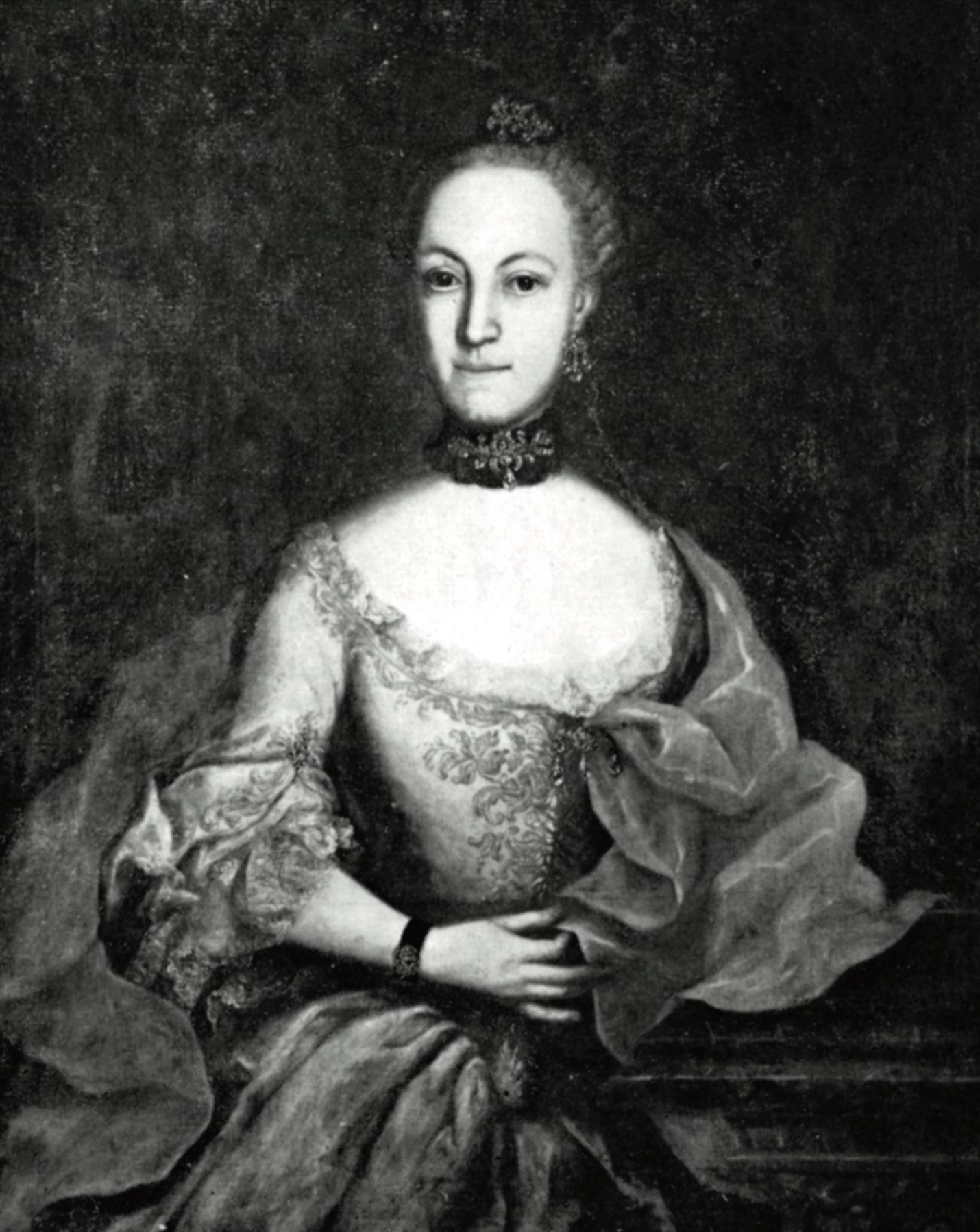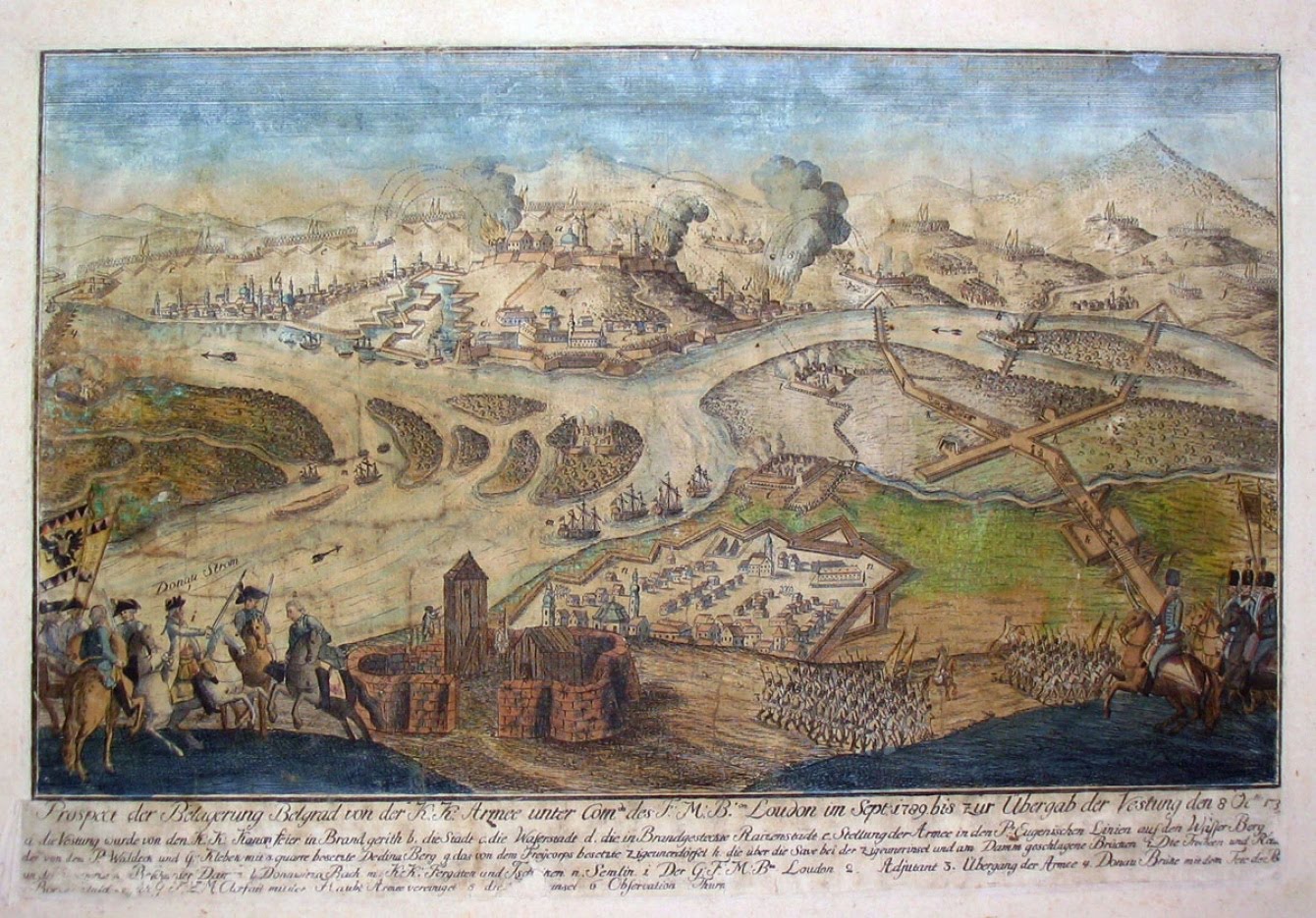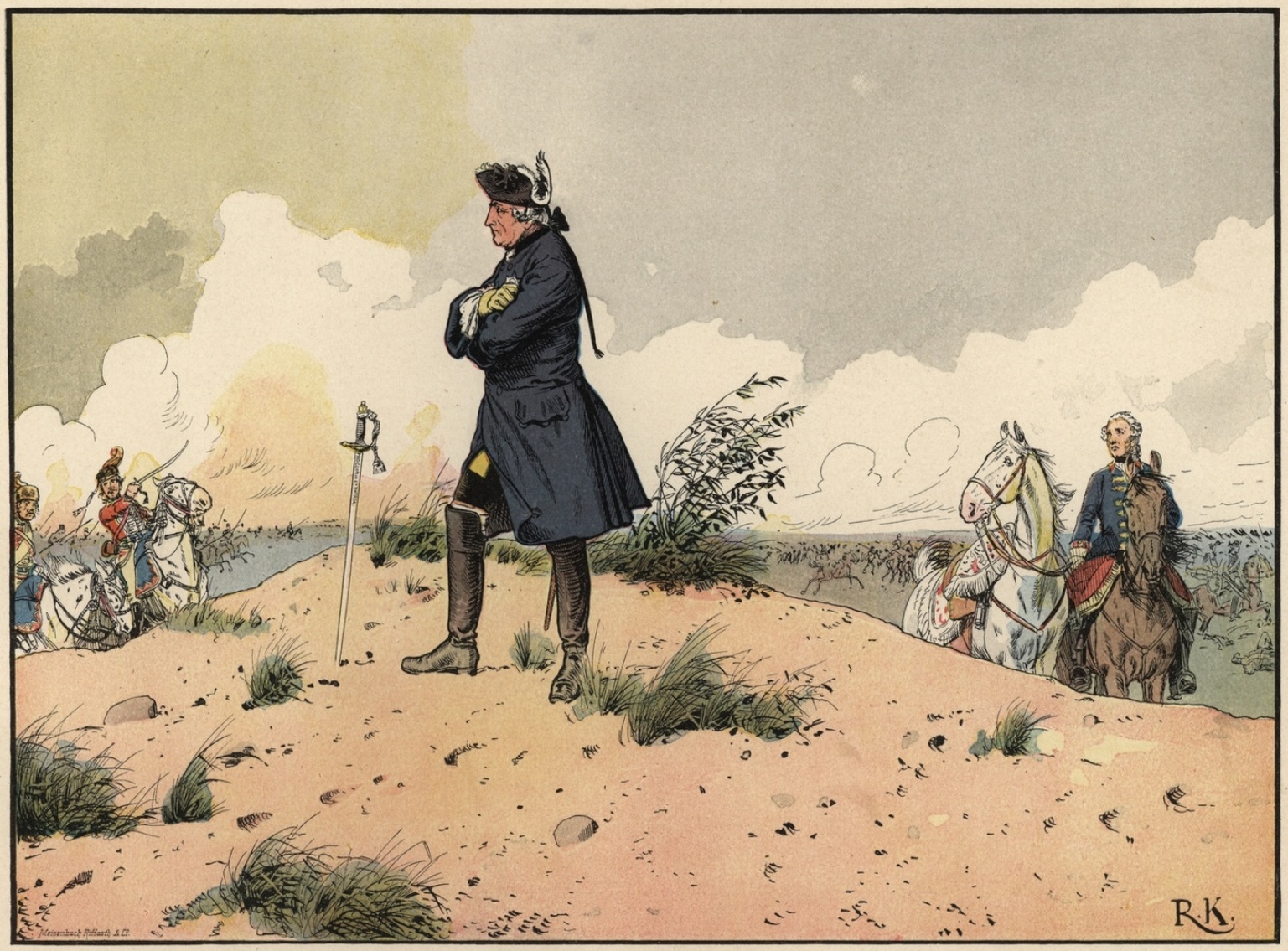|
Ernst Gideon Freiherr Von Laudon
Ernst Gideon von Laudon, since 1759 Freiherr von Laudon (originally Laudohn or Loudon; 13 February 171714 July 1790), was a Baltic German-born Austrian military officer and one of the most successful opponents of the Prussian king Frederick the Great. Background and early career Laudon was the son of Otto Gerhard Ritter von Laudohn (1673-1732), a lieutenant-colonel, retired on a meagre pension from the Swedish service and his wife, Sophie Eleonore von Bornemann (1680-1734). The Laudohn family, of mixed German and Latgalian origin, had been settled in the estate of Tootzen, near Laudohn in Eastern Livonia (present-day Latvia) before 1432. He claimed a kinship with the Earls of Loudoun from Scotland, which could not be established. As upon the Great Northern War Livonia had been ceded to Russia according to the 1721 Treaty of Nystad, the boy was sent to the Imperial Russian Army as a cadet in 1732. During the War of the Polish Succession he took part in the 1734 Siege of Dan ... [...More Info...] [...Related Items...] OR: [Wikipedia] [Google] [Baidu] |
Freiherr
(; male, abbreviated as ), (; his wife, abbreviated as , ) and (, his unmarried daughters and maiden aunts) are designations used as titles of nobility in the German-speaking areas of the Holy Roman Empire, the Austro-Hungarian Empire and in its various successor states, including Austria, Prussia, Bavaria, Liechtenstein, Luxembourg, etc. Traditionally, it denotes the titled rank within the nobility above ' (knight) and ' (nobility without a specific title) and below ' ( count or earl). The title superseded the earlier medieval form, '. It corresponds approximately to the English baron in rank. The Duden orthography of the German language references the French nobility title of ''Baron'', deriving from the Latin-Germanic combination ''liber baro'' (which also means "free lord"), as corresponding to the German "Freiherr"; and that ''Baron'' is a corresponding salutation for a ''Freiherr''. Duden; Definition of ''Baron, der'' (in German)/ref> ' in the feudal system The title ... [...More Info...] [...Related Items...] OR: [Wikipedia] [Google] [Baidu] |
Battle Of Domstadtl
The Battle of Domstadtl (also spelled Domstadt, ) was a battle between the Habsburg monarchy and the Kingdom of Prussia in the Moravian village of Domašov nad Bystřicí during the Third Silesian War (part of the Seven Years' War) on 30 June 1758, preceded by a minor clash at Guntramovice (Gundersdorf) on 28 June. Austrians under the command of Major General Ernst Gideon von Laudon and Major General Joseph von Siskovits attacked and destroyed a supply convoy bound for the Prussian army besieging Olomouc (Olmütz). The Austrian victory saved the city and the Prussian King Frederick the Great was forced to leave Moravia. Prussian invasion of Moravia Frederick the Great invaded Moravia in the beginning of May 1758 and besieged the fortified city of Olomouc. He hoped that the Austrian army would come to help the fortress and the Prussians would defeat them in a big battle at the place of their choice. If the Austrian army did not come, he could conquer the fortress in a sho ... [...More Info...] [...Related Items...] OR: [Wikipedia] [Google] [Baidu] |
Baltic German
Baltic Germans ( or , later ) are Germans, ethnic German inhabitants of the eastern shores of the Baltic Sea, in what today are Estonia and Latvia. Since Flight and expulsion of Germans (1944–1950), their resettlement in 1945 after the end of World War II, Baltic Germans have drastically declined as a geographically determined ethnic groups in Europe, ethnic group in the region, with diaspora generally relocating to Germany proper and beyond. Since the late Middle Ages, native German-speakers formed the majority of merchants and clergy, and the large majority of the Baltic nobility, local landowning nobility who effectively constituted a ruling class over indigenous Latvians, Latvian and Estonians, Estonian non-nobles. By the time a distinct Baltic German ethnic identity began emerging in the 19th century, the majority of self-identifying Baltic Germans were non-nobles belonging mostly to the urban and professional middle class. In the 12th and 13th centuries, Catholic Chu ... [...More Info...] [...Related Items...] OR: [Wikipedia] [Google] [Baidu] |
Klara Von Hagen , an electric scooter made in Vietnam
*
{{disambiguation ...
Klara may refer to: * Klara, a female given name, see Clara (given name) * Klara (radio), a classical-music radio station in Belgium * Klara (singer), birth name Klára Vytisková (born 1985), Czech singer * Klara (Stockholm), an area of central Stockholm * Klarälven (the Klar River, or River Klara) in Sweden * VinFast Klara VinFast Auto Ltd. is a Vietnamese multinational automotive company founded by Vingroup, one of the largest private conglomerates in Vietnam that was founded by Pham Nhat Vuong. Established in 2017 in Haiphong, it is the first Vietnamese ca ... [...More Info...] [...Related Items...] OR: [Wikipedia] [Google] [Baidu] |
Walhalla (memorial)
The Walhalla () is a hall of fame monument that honours laudable and distinguished people in German history"politicians, sovereigns, scientists and artists of the German tongue";Official Guide booklet, 2002, p. 3 While all new inductees since 1890 have been Germans or German-speakers, several earlier honorees came from outside modern Germany, which had not yet been established when the monument was built. Their inclusion reflects a 19th-century, still evolving, more loosely defined concept of " Germanness", one that would today be seen as conflating the term "German" with the much broader notion of having spoken a Germanic language or being of partial or supposed German ancestry. The Walhalla memorial is named for the '' Valhǫll'' of Norse Paganism. It was conceived in 1807 by Crown Prince Ludwig I of Bavaria in order to support the gathering momentum for the unification of the many German states into the German Empire. Following his accession to the throne of Bavaria, constru ... [...More Info...] [...Related Items...] OR: [Wikipedia] [Google] [Baidu] |
Catherine The Great
Catherine II. (born Princess Sophie of Anhalt-Zerbst; 2 May 172917 November 1796), most commonly known as Catherine the Great, was the reigning empress of Russia from 1762 to 1796. She came to power after overthrowing her husband, Peter III. Under her long reign, inspired by the ideas of the Enlightenment, Russia experienced a renaissance of culture and sciences, which led to the founding of many new cities, universities, and theatres, along with large-scale immigration from the rest of Europe and the recognition of Russia as one of the great powers of Europe. In her accession to power and her rule of the empire, Catherine often relied on her noble favourites, most notably Count Grigory Orlov and Grigory Potemkin. Assisted by highly successful generals such as Alexander Suvorov and Pyotr Rumyantsev, and admirals such as Samuel Greig and Fyodor Ushakov, she governed at a time when the Russian Empire was expanding rapidly by conquest and diplomacy. In the south, the ... [...More Info...] [...Related Items...] OR: [Wikipedia] [Google] [Baidu] |
Military Order Of Maria Theresa
The Military Order of Maria Theresa (; ; ; ; ; ) was the highest military honour of the Habsburg monarchy, Austrian Empire and Austro-Hungarian Empire. History Founded on 18 June 1757, the day of the Battle of Kolín, by the Empress Maria Theresa, the honour was to reward especially meritorious and valorous acts by commissioned officers, including and especially the courageous act of defeating an enemy, and thus "serving" their monarch. It was specifically given for "successful military acts of essential impact to a campaign that were undertaken on he officer'sown initiative, and might have been omitted by an honorable officer without reproach." This gave rise to a popular myth that it was awarded for (successfully) acting against an explicit order. It is considered to be the highest honour for a soldier in the Austrian armed services. Originally, the order had two classes: the Knight's Cross and the Grand Cross. On 15 October 1765, Emperor Joseph II added a Commander's ... [...More Info...] [...Related Items...] OR: [Wikipedia] [Google] [Baidu] |
Siege Of Belgrade (1789)
In the siege of Belgrade (15 September – 8 October 1789) a Habsburg Austrian army led by Feldmarschall Ernst Gideon von Laudon besieged an Ottoman Turkish force under Osman Pasha in the fortress of Belgrade. After a three-week leaguer, the Austrians forced the surrender of the fortress. During the campaign which was part of the Austro-Turkish War, the Austrian army was greatly hampered by illness. Austria held the city until 1791 when it handed Belgrade back to the Ottomans according to the terms of the peace treaty. Several Austrian soldiers who distinguished themselves during the siege later held important commands in the subsequent French Revolutionary Wars and Napoleonic Wars. Belgrade is the capital of modern Serbia. At the urging of Russian Empress Catherine the Great, Joseph II, Holy Roman Emperor committed the Habsburg monarchy to a war against Ottoman Turkey. In 1788, the Austrians captured one fortress and seized some territory but most of their efforts were thwarte ... [...More Info...] [...Related Items...] OR: [Wikipedia] [Google] [Baidu] |
Austro-Turkish War (1788–1791)
The Austro-Turkish War, also known as the Habsburg–Ottoman War, was fought from 1788 to 1791, between the Habsburg monarchy and the Ottoman Empire. During the conflict, Habsburg armies succeeded in taking Belgrade (1789) and liberating much of central Serbia, also capturing several forts in central Croatia and in the Pounje region of the Ottoman Bosnia. Much of those gains were lost in the later stages of the war, that ended by the Treaty of Sistova (1791), with minor territorial changes in favor of the Habsburg side. The war was fought concomitantly with the Russo-Turkish War (1787–1792). War aims The war began soon after the breakout of the Russian-Turkish conflict. The Russian Empire, headed by Catherine the Great, had been involved in previous wars of conquest against the Ottomans, and the two nations were openly hostile. In August 1787, after "numerous Russian provocations" according to Hochedlinger, the Ottoman Empire declared war on the Russians. The Austrian E ... [...More Info...] [...Related Items...] OR: [Wikipedia] [Google] [Baidu] |
War Of The Bavarian Succession
The War of the Bavarian Succession (; 3 July 1778 – 13 May 1779) was a dispute between the Austrian Habsburg monarchy and an alliance of Electorate of Saxony, Saxony and Kingdom of Prussia, Prussia over succession to the Electorate of Bavaria after the extinction of the Bavarian branch of the House of Wittelsbach. The Habsburgs sought to acquire Bavaria, and the alliance opposed them, favoring another branch of the Wittelsbachs. Both sides mobilized large armies, but the only fighting in the war was a few minor skirmishes. However, thousands of soldiers died from disease and starvation, earning the conflict the name ''Kartoffelkrieg'' (Potato War) in Prussia and Saxony; in Habsburg Austria, it was sometimes called the ''Zwetschgenrummel'' (Plum Fuss). On 30 December 1777, Maximilian III Joseph, the last of the Treaty of Pavia (1329), junior Wittelsbach line, died of smallpox, leaving no children. Charles Theodore, Elector of Bavaria, Charles Theodore, a scion of a senior branc ... [...More Info...] [...Related Items...] OR: [Wikipedia] [Google] [Baidu] |
Battle Of Liegnitz (1760)
The Battle of Liegnitz on 15 August 1760 saw Frederick the Great's Prussian Army defeat the Austrian army under Ernst von Laudon during the Third Silesian War (part of the Seven Years' War). The armies collided around the town of Liegnitz (now Legnica Legnica (; , ; ; ) is a city in southwestern Poland, in the central part of Lower Silesia, on the Kaczawa River and the Czarna Woda. As well as being the seat of the county, since 1992 the city has been the seat of the Diocese of Legnica. Le ..., Poland) in Lower Silesia. Laudon's Austrian cavalry attacked the Prussian position in the early morning but were beaten back by General Zieten's Hussars. An artillery duel emerged which was eventually won for the Prussians when a shell hit an Austrian powder wagon. The Austrian infantry then proceeded to attack the Prussian line, but was met with concentrated artillery fire. A Prussian infantry counter-attack led by the Regiment Anhalt-Bernburg on the left forced the Austrians in ... [...More Info...] [...Related Items...] OR: [Wikipedia] [Google] [Baidu] |
Battle Of Kunersdorf
The Battle of Kunersdorf occurred on 12 August 1759 near Kunersdorf (now Kunowice, Poland) immediately east of Frankfurt an der Oder. Part of the Third Silesian War and the wider Seven Years' War, the battle involved over 100,000 men. An Allied army commanded by Pyotr Saltykov and Ernst Gideon von Laudon that included 41,000 Russians and 18,500 Austrians defeated Frederick the Great's army of 50,900 Prussians. The terrain complicated battle tactics for both sides, but the Russians and the Austrians, having arrived in the area first, were able to overcome many of its difficulties by strengthening a causeway between two small ponds. They had also devised a solution to Frederick's deadly ''modus operandi'', the oblique order. Although Frederick's troops initially gained the upper hand in the battle, his limited scouting, combined with the strong defensive preparations of the Allied troops, gave the Russians and Austrians an advantage. By afternoon, when the combatants were exh ... [...More Info...] [...Related Items...] OR: [Wikipedia] [Google] [Baidu] |






